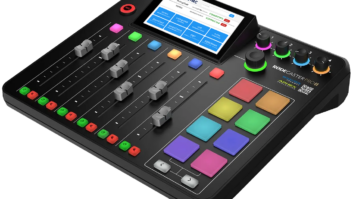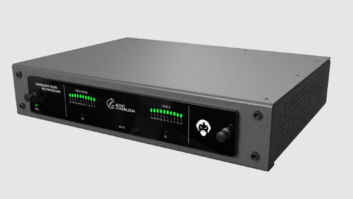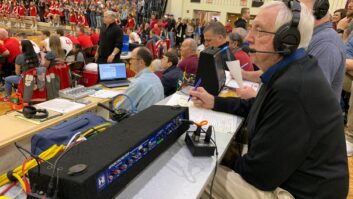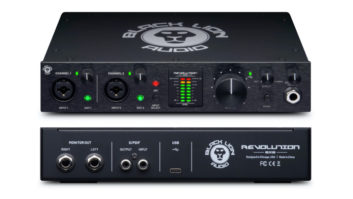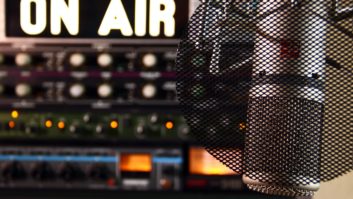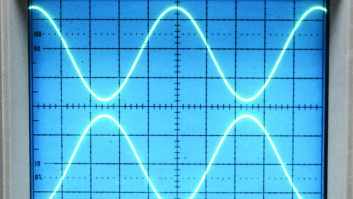The author is membership program director of the National Federation of Community Broadcasters. NFCB commentaries are featured regularly at www.radioworld.com.

I received many kind words for my recent Radio World commentary on New Year’s resolutions for community radio. Now, about three weeks into 2018, this is the time when everyone’s wavering on their respective pledges, be it to those Christmas gym sneakers or that five-year strategic plan. A good jolt to your grand ideas for community media is taking a look at trends, and few are bigger than smart speakers.
Smart audio is all the rage right now, with Motley Fool among those declaring this to be the new gear’s breakout year. The hype comes for good reason. Community radio has a superb opportunity to connect with new fans.
A lot of folks in radio have seen in Radio World extensive coverage of smart speakers and their potential with the medium. A quick explanation may be in order for those who need a refresher on what smart audio means.
If you have used Siri or OK Google with your smartphone, you have no doubt been entranced by the coolness of voice search. Smart speakers, which include the Amazon Echo, Apple HomePod, Google Home and others, take it up a notch. These devices are seeing wide adoption for listening to music and talk, to entertain children, and to link smart appliances like your television and lights. And they are revolutionizing media. Only two years in, smart speakers are seeing a pace of adoption that is far faster than tablets and your smartphone. The holidays saw big sales of Echoes, Homes and others. Slate noted it was a best-selling gift.
A new report, issued in conjunction with the recent International Consumer Electronics Show, offers many insights for those who care about community media. The study by NPR and Edison Research presents several surprising findings, including the fact that one in six Americans now has a smart speaker.
Other findings, as summed up in a National Federation of Community Broadcasters newsletter this month:
- 90% of owners wanted a smart speaker to listen to music
- 77% of owners wanted a smart speaker to get news and information
- 70% of respondents are consuming more audio due to their smart speakers
Steven Goldstein is among those who have noted the latest figures may look cloudy for radio, where AM/FM tune-in is down. However, he points out, radio listening on devices is high.
Community media sometimes tussles a bit to catch up with the tremendous resources that get invested in new technology. In this instance, the fact that smart audio has only emerged in the last two years means it is relatively easy to get in the mix. If this buzzworthy matter was on your New Year’s resolution short list, here’s a hand in jumping back in.
First and foremost, educating listeners is a must. There’s a good chance your audience members may be toying with a smart speaker they might have gotten over the holidays anyway. This is your opportunity to be part of your longtime supporters’ experience.
If your community radio station streams its signal, chances are you already have a presence on the Echo, Echo Dot, HomePod and Home. That’s because many of these platforms have relationships with services such as TuneIn. TuneIn, in particular, features station streams on its native app as well as through Amazon’s speaker family, by far the most popular smart audio brand. For instance then, you can say “Alexa, play [call letters]” or “Alexa, play [call letters] on TuneIn” and get the station of your choice streamed to you.
Once you determine the easiest way to call up your station on smart speakers, your next task is to educate your audience. On-air spots, website tutorials and social media outreach are just a few ways to teach your listeners how to use their devices to find your station.
Beyond educating your area, there’s also an important conversation to be had about your long-term planning. Do you want to serve content exclusively to smart speakers? For example, Alexa’s Flash Briefing has become a hot conduit for news for everything from Reuters to the Skimm. If your station does its own podcasts, how could smart audio be used to amplify them to those beyond your current base? Nick Quah earlier this month examined the future of podcasting on smarter speakers that may inform your thinking. Could your community radio station feature local news there? Smart audio is so new, the possibilities are limited only by time and people.
It is projected that about 50% of search will be done by voice by the year 2020 and that smart speaker adoption will climb as this year progresses. The entry level for these voice activated devices is ridiculously low, at around $30, so it is certain that more and more of your neighbors and listeners will check them out, if for no other reason but curiosity. Don’t let your smart audio future end up beside those gym sneakers.





